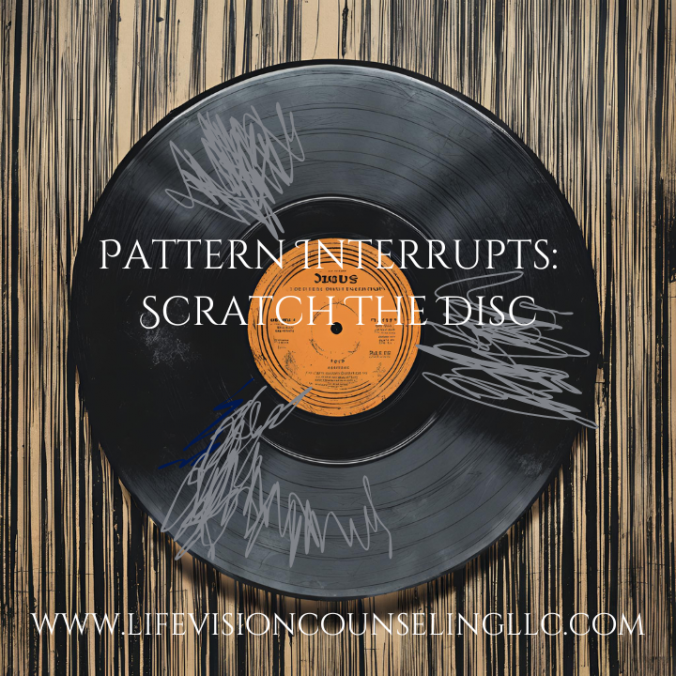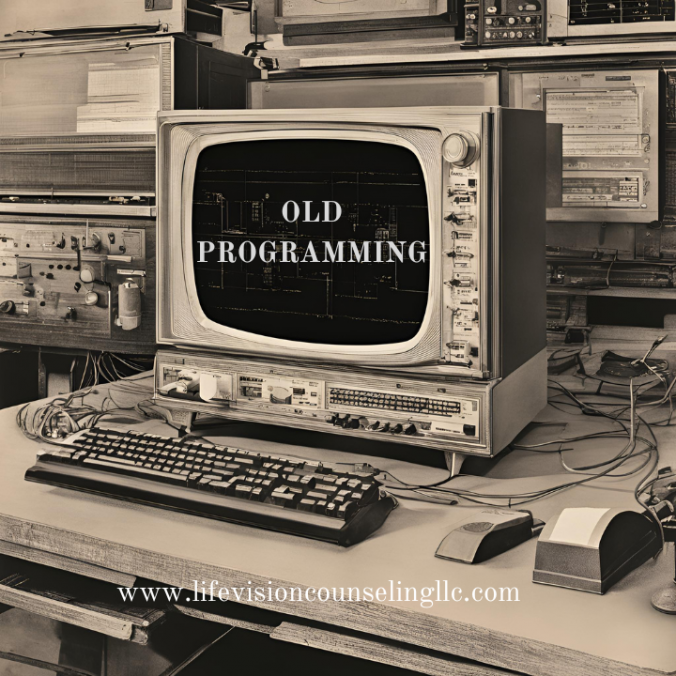Breaking Free from Old Programming: The Power of Pattern Interrupts
Sometimes people struggle to break free from repetitive patterns that no longer serve them. Whether it’s a destructive thought loop, self-sabotaging behavior, or an emotional response that feels automatic, these patterns are often remnants of old programming. They are habits rooted in past experiences and reinforced over time.
The good news? You don’t have to stay stuck. One of the most powerful tools for rewiring your mind and creating change is the concept of pattern interrupts.
What Are Pattern Interrupts?
A pattern interrupt is a conscious action that disrupts a habitual thought, emotion, or behavior. Imagine you’re watching a movie, and suddenly the screen freezes or the audio cuts out—your brain snaps out of the story and becomes alert. That’s the effect of a pattern interrupt: it jars you out of autopilot and creates an opportunity to make a different choice.
Our brains thrive on routines because they save energy. But when those routines are unhealthy or unhelpful, interrupting them creates a gap where awareness and change can take place.
Why Old Programming Sticks
Old programming often forms in response to experiences where we learned how to survive, avoid pain, or seek connection. For example:
- Self-doubt might stem from a childhood where criticism was common.
- Overworking might be a coping mechanism for feeling unworthy without constant achievement.
- Emotional reactivity might arise from unresolved trauma that wired you to perceive threats.
Over time, these patterns become hardwired, running like background software in your mind. Left unchecked, they govern your decisions, reactions, and even your relationships.
How Pattern Interrupts Work
Pattern interrupts disrupt the mental or emotional flow, creating a moment of awareness. This interruption gives you the power to pause, reflect, and choose a new response. Here’s how it works:
- Recognition: Notice the pattern as it’s happening. For example, if you’re spiraling into negative self-talk, practice recognizing it in the moment.
- Disruption: Take an action that shifts your state. This could be as simple as clapping your hands, snapping your fingers, humming a few notes, or even doing a push-up – anything that interrupts the pattern. It can help to choose a pattern-interrupt that’s silly or unusual.
- Reframe: Use the moment of awareness to choose a new thought or action that aligns with your goals.
Examples of Pattern Interrupts
Here are some practical ways to break free from old programming:
- Physical Interrupts: Movement is a quick way to shift energy. If you find yourself stuck in a negative loop, stand up, stretch, or go for a brisk walk. Even splashing cold water on your face can work wonders.
- Verbal Interrupts: Say something aloud to disrupt your thought process. For example, shout “Nope!” or ask yourself, “Is this thought even true?”
- Sensory Interrupts: Use your senses to ground and orient yourself in the present. Light a candle with a soothing scent, listen to uplifting music, or hold an ice cube in your hand to jolt yourself into the moment.
- Behavioral Interrupts: Do something unexpected. If you’re stuck in procrastination, set a timer for two minutes and commit to just starting. This small action can disrupt inertia and build momentum.
Rewiring the Brain
The beauty of pattern interrupts is that, over time, they help to rewire your brain. Each time you interrupt a negative pattern and choose a healthier response, you’re creating a new neural pathway. This process, known as neuroplasticity, is how the brain adapts and forms new habits.
Consistency is key. The more you practice interrupting old patterns, the weaker they become. Over time, the healthier responses become your new default.
From Awareness to Transformation
Pattern interrupts are not just about stopping old habits—they’re about creating space for intentional living. When you interrupt a pattern, you’re reclaiming your power to choose how you think, feel, and act.
As you work on rewiring your old programming, remember to be patient with yourself. Transformation is a journey. Celebrate small victories and remind yourself that every time you choose differently, you’re reshaping your future.
You are not your old patterns—you are the conscious creator of your life.
What patterns are you ready to interrupt today?


